The Last Supper is a 15th century mural painting by Leonardo da Vinci. Da Vinci started working on the painting in 1495 and finished it in 1498. It’s one of the most famous paintings in the world, and it’s also one of the most studied, scrutinized and satirized. Take a look below for 25 more interesting and fascinating facts about The Last Supper painting.
1. While there have been many reproductions, the original is 4.6 by 8.8 meters, or 15 by 28.8 feet.
2. The subject of the Last Supper is Christ’s final meal with his apostles before Judas identified Christ to the Romans who arrest him.
3. During The Last Supper, Christ says to his apostles, “One of you will betray me,” and the apostles react, each according to his own personality. Referring to the Gospels, da Vinci depicts Philip asking, “Lord, is it I?” Christ replies, “He that dippeth his hand with me in the dish, the same shall betray me.” As we see, Christ and Judas simultaneously reach toward a plate that lies between them, even as Judas defensively backs away.
4. In the painting, da Vinci also shows Christ blessing the bread saying, “Take, eat; this is my body,” and blessing the wine saying, “Drink from it all of you; for this is my blood of the covenant, which is poured out for the forgiveness of sins.”
5. Da Vinci shows Christ’s statements causing visible responses in the painting. There is a wave of emotion among the apostles, each reacting in a way that shows their personality. However, even though there is so much emotion in the painting, da Vinci imposes a sense of order.
6. The number 3 is shown many times in the painting, which represents the Christian belief in the Holy Trinity. The apostles are seated in groupings of 3, there are 3 windows behind Christ, and the shape of Jesus’ figure resembles a triangle.
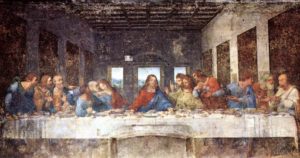
7. Da Vinci used new materials for The Last Supper. Instead of using tempera on wet plaster, which was the preferred method of fresco painting, he thought he’d try dry plaster. His experiment resulted in a more varied palette, which was his intent.
8. Since the painting was on a thin exterior wall, the effects of humidity were felt more keenly, and the painting didn’t adhere to the wall properly. Due to the method he used, as soon as the painting was completed, it began to deteriorate.
9. There have been 7 documented attempts to repair the Last Supper. The first restoration took place in 1726, the last and most extensive was completed in 1999.
10. The painting has been the target of a lot of speculation by writers and historical revisionists, usually centered on purported hidden messages or hints found within the painting.
11. The Last Supper was when the First Eucharist occurred.
12. The Last Supper was foretold in the Old Testament. A priest from God Most high named Melchizedek brought out bread and wine. Then David said that Christ would be, “a priest forever in the order of Melchizedek.”
13. The Last Supper is told in all four gospels, but there’s a different account of the supper in the book of John. He says that the gathering happened the day of Passover, while the other 3 synoptic gospels say that the gathering happened the day before Passover.
14. The painting has a permanent home in a convent in Milan, Italy. Da Vinci painted the work directly on the dining hall wall of the Convent of Santa Maria delle Grazie back in 1495.
15. What makes the painting so striking is the perspective from which it’s painted, which seems to invite the viewer to step right into the dramatic scene. To achieve this illusion, da Vinci hammered a nail into the wall, then tied strings to it to make marks that helped guide his hand in creating the painting’s angels.
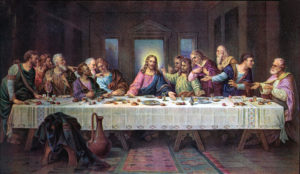
16. In 1652, a doorway was added to the wall where the painting is. It’s construction meant that a lower central chunk of the painting, which had Christ’s feet, was destroyed.
17. When it came time to pick the face for Judas, it’s said that da Vinci searched the jails of Milan for the perfect looking criminal.
18. To the right of Christ, Thomas stands in profile with his finger pointing up in the air. Some people believe that this becomes key in a later Bible story when Christ rises from the dead and Thomas doubts his eyes, so he probes Christ’s wounds with his finger to help him believe.
19. In The Templar Revelation, Lynn Picknett and Clive Prince propose that the figure to the left of Christ isn’t John, but Mary Magdalene, and that The Last Supper is evidence in a cover up of the true identity of Christ by the Roman Catholic Church.
20. In 2007, Italian musician Giovanni Maria Pala made 40 seconds of somber song using notes that were supposedly encoded within da Vinci’s distinctive composition in The Last Supper.
21. The convent in which The Last Supper is located can only hold 20 to 25 people in at once. That’s why it’s recommended that visitors book tickets at least 2 months in advance if they want to see it.
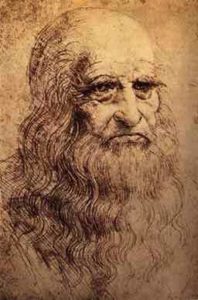
22. In 2010, Sabrina Sforza Galitzia translated what she saw as mathematical and astrological indicators in The Last Supper as a message from the artist about the end of the world. According to her interpretation, da Vinci says that the apocalypse will take place in the year 4006.
23. At the end of the 20th century, restorer Panin Brambilla Barcilo and his team used microscopic photographs, core samples, infrared reflectoscopy and sonar to remove the added layers of paint and restore the original as accurately as possible. Many critics state that only a fraction of The Last Supper that exists today is the work of da Vinci.
24. 3 of da Vinci’s students made copies of his paintings early in the 16th century. Giampietrino did a full scale copy of The Last Supper that’s now in London’s Royal Academy of Arts. The second copy was done by Andrea Solari and is in the Leonardo da Vinci Museum in Belgium. The third copy was done by Cesare de Sesto and is in the Church of Saint Ambrogio in Switzerland.
25. Da Vinci loved symmetry and in The Last Supper, the layout is largely horizontal. The table is seen in the foreground of the image will of the figures behind it. The painting is very symmetrical with the same number of figures on either side of Jesus.


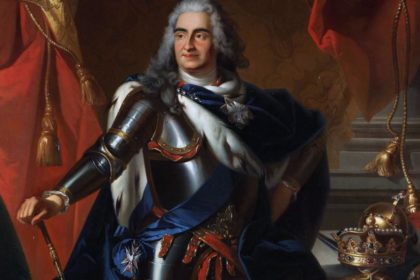
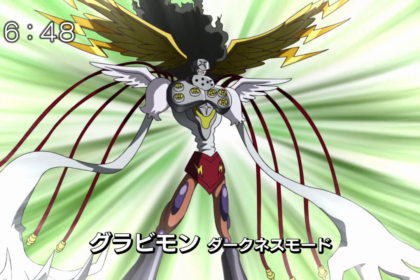
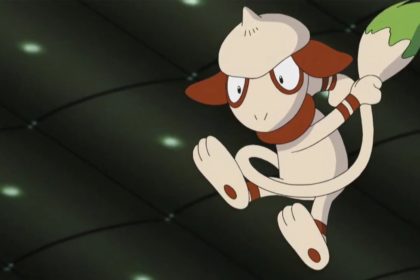
One Comment
Pingback:
January 2, 2018 at 9:10 pm